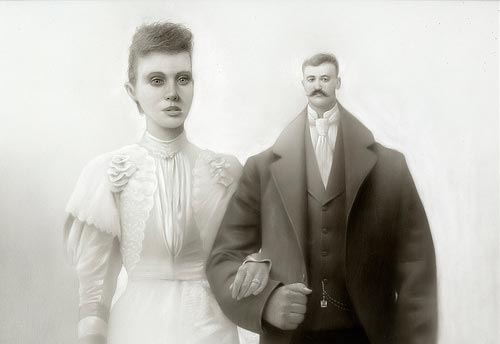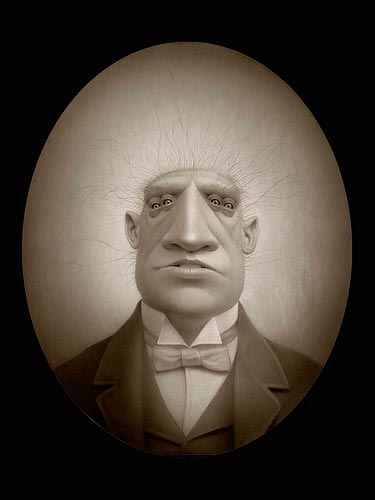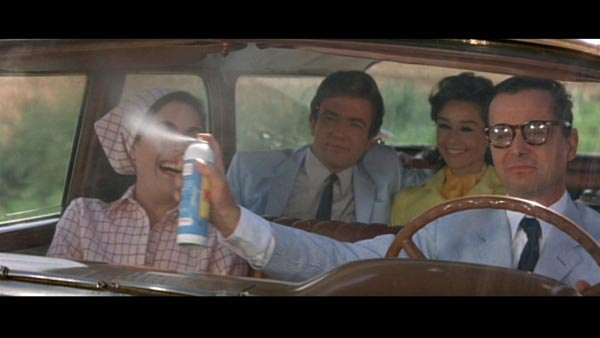
|
|
|

It may seem strange to identify a sensation of temperature with the visual realm of color sensation. However, experiments have demonstrated a difference of five to seven degrees in the subjective feeling of heart or cold between a workroom painted in blue-green and one painted in red-orange. That is, in the blue-green room the occupants felt that 59° F was cold, whereas in the red-orange room they did not feel cold until the temperature fell to 52 - 54° F. Objectively, this meant blue-green slows down the circulation and red-orange stimulates it.
Similar results were obtained in an animal experiment. A racing stable was divided into two sections, the one pointed blue, the other red-orange. ln the blue section, horses soon quieted down after running, but in the red section they remained hot and restless for some time. It was found that there was no flies in the blue section, and a great many in the red section.
{ Johannes Itten, The Art of Color, 1920 }
archives, colors |
January 28th, 2010
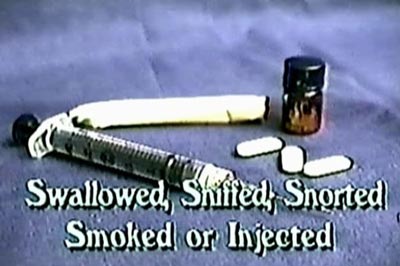
Pharmaceutical companies are always on the lookout for secondary drug targets. After all, if you invest billions developing a single drug, you would be more than happy to sell it as a treatment for two, three, or more different ailments. Sildenafil citrate was developed to treat angina and hypertension. During phase I clinical trials, it was found that Sildenafil induces penile erections. The drug was branded Viagra, and the rest is history. Eflornithine, an anti-cancer drug, is also effective against the agent of African Sleeping Sickness, Trypanosoma brucei. African Sleeping Sickness belongs to a group of diseases known as “neglected diseases”, for which drug development is not profitable. However, having a drug already on hand makes it easier to market in affected areas.
Another example of polypharmacology is a drug that binds to multiple targets in the human body. This could be used for overcoming drug resistance, a known problem with cancer. Cancer tumours often develop a resistance to anti-cancer drugs because the protein that the drug bind to mutates, and no longer binds the drug. However, if the drug acts by binding redundantly to several proteins, it would be more effective, since several mutations would be required to effect drug resistance.
{ Byte Size Biology | Continue reading }
drugs, health, science |
January 28th, 2010
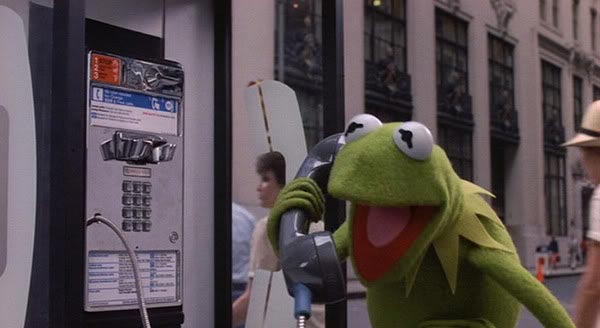
baltimore craigslist
Personal Texting Assistant
Date: 2009-06-23, 11:39PM EDT
Looking for an assistant to help in texting duties -
replies
deleting texts
alerting of new texts
reading texts
filtering text
I get 40 - 50 texts an hour, I cant handle my workload plus texting responsibilities. My phone gets too full and needs deleted every couple hours. This is a full time position and you must be where ever I am at, because my phone is always with me. Serious inquiries only.
haha, technology |
January 28th, 2010

Last week, I read a few articles in relation to results from a recent Australian Hotel Association (AHA) survey, revealing that women are consistently more likely to pilfer than men. Millions of dollars a year in the hotel industry, are lost to theft; from tiny soft face towels, to larger items like statues. Essentially, anything not nailed down. (…)
While exploring other topics on the subject matter to cover, I learned about the different tactics reportedly used by women to steal. Did you know about Crotch Walking? Taken directly from- Associated Content.com: Shoplifting Statistics and Tactics, explains it as, “Crotch walking is a theft tactic that is cleverly performed by women. They simply wear a full dress or skirt into the store; place an item between their thighs, and walk out of the business like it is any other normal shopping day. Women with stronger thighs have been known to shoplift larger ticket items like electronics.”
{ Bust | Continue reading }
scams and heists |
January 28th, 2010

…walk around. First walk normally, with your arms swinging. Then try it with your arms folded. Finally, do it with your arms and legs on each side in phase, swinging forwards and back at the same time – a “tick-tocking” motion. (…)
If you have carried out this little experiment, then you will probably have noticed that the second and third ways of walking are more difficult. But why? The answer – as it is for many important questions in biomechanics – is more complicated than you might think. (…)
One might assume that we already know all about how the organs and whole bodies of organisms – particularly Homo sapiens – work. Movements and forces at the macroscopic scale are, after all, relatively straightforward to measure and subject only to the laws of classical physics. Moreover, the anatomy of our bodies has been mapped for hundreds of years compared with the 10 years for which we have had comprehensive guides to the human genome. Surprisingly, however, research by biomechanics – people who combine expertise in both biology and physics – continues to uncover and fill hitherto undreamed-of areas of our ignorance about ourselves.
{ Physics World | Continue reading }
science |
January 28th, 2010

Several great psychology and neuroscience studies were published in 2009. Below I’ve chosen 10 that I think are among the most noteworthy. (…)
1. If you have to choose between buying something or spending the money on a memorable experience, go with the experience. (…)
8. Turns out, saying you’re sorry really is important—and not just to you. (…)
9. We can become bored with just about anything, but there may be a way to reverse the habituation blues.
{ True/Slant | Continue reading }
psychology |
January 28th, 2010

Is there life after death? Theologians can debate all they want, but radiation oncologist Dr. Jeffrey Long says if you look at the scientific evidence, the answer is unequivocally yes. Drawing on a decade’s worth of research on near-death experiences — work that includes cataloguing the stories of some 1,600 people who have gone through them — he makes the case for that controversial conclusion in a new book, Evidence of the Afterlife. (…)
Medically speaking, what is a near-death experience?
A near-death experience has two components. The person has to be near death, which means physically compromised so severely that permanent death would occur if they did not improve: they’re unconscious, or often clinically dead, with an absence of heartbeat and breathing. The second component [is that] at the time they’re having a close brush with death, they have an experience. [It is] generally lucid [and] highly organized.
{ Time | Continue reading }
illustration { Jong Myung Hwang }
experience, mystery and paranormal, science |
January 28th, 2010

So Wiseman has written a self-help book of his own, a collection of techniques built on findings from academic research in psychology.
Call it evidence-based self-help. The book is called 59 Seconds, for the time it’s supposed to take to practice each of the bits of advice Wiseman lays out within: Looking to seduce someone? Take your date to an amusement park or on a vigorous run, for research shows that attraction increases along with heart rate. Think someone’s prone to telling you white lies? Correspond more with them by e-mail, for research shows people are less likely to prevaricate when there’s a written record that could trip them up later.
{ Freakonomics | Continue reading | Interview }
books, guide, psychology |
January 28th, 2010
motorpsycho, photogs |
January 28th, 2010
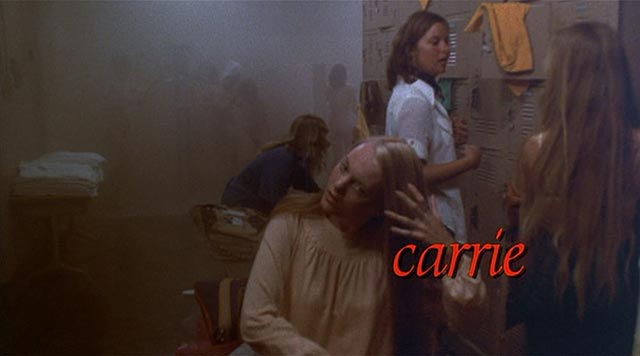
What is a “mental illness”? What is an “illness”? What does the description and classification of “mental illnesses” actually involve, and is the description of “new” mental illnesses description of actually existing entities, or the creation of them?
“Solastalgia” is a neologism, invented by the Australian environmental philosopher Glenn Albrecht, to give greater meaning and clarity to psychological distress caused by environmental change. …) The doctor and former British Foreign Secretary, Lord Owen, has coined the phrase “hubris syndrome” to describe the mindset of prime ministers and presidents whose behaviour is characterised by reckless, hubristic belief in their own rightness.
This paper uses both the concept of solastalgia and the related concepts Albrecht posited of psychoterratic and somaterratic illnesses and hubris syndrome as a starting point to explore issues around the meaning of mental illness, and what it means to describe and classify mental illness.
{ Seamus P. MacSuibhne, What makes “a new mental illness”?: The cases of solastalgia and hubris syndrome | Cosmos and History: The Journal of Natural and Social Philosophy | Continue reading }
quote { Thanks Robert }
health, ideas, psychology |
January 28th, 2010

According to accepted DSM-IV diagnostic criteria, close to 50% of people suffer from a mental illness at some point; a large fraction of this being depression. 10% of Americans took antidepressants last year according to the best estimates.
Guess what? Clever people have started asking “Antidepressants are amongst the biggest selling drugs in the world - but do they work?” And their answer is - not very well.
{ Neuroskeptic | Continue reading }
related { Does semen have antidepressant properties? }
photo { Leilani Wertens }
drugs, health |
January 28th, 2010

I once tried setting my watch ahead a few minutes to help me make it to appointments on time. At first it worked, but not because I was fooled. I would glance at the watch, get worried that I was late, then remember that the watch is fast. But that brief flash acted as a sort of preview of how it feels to be late. And the feeling is a better motivator than the thought in the abstract.
But that didn’t last very long. The surprise wore off. I wonder if there are ways to maintain the surprise. For example, instead of setting the watch a fixed time ahead, I could set it to run too fast so that it gained an extra minute every week or month. Then if I have adaptive expectations I could consistently fool myself.
{ Cheap Talk | Continue reading }
experience, guide, time |
January 28th, 2010

“When a man sits with a pretty girl for an hour,” said Albert Einstein, “it seems like a minute. But let him sit on a hot stove for a minute, and it’s longer than any hour.” Einstein was describing one of the most profound implications of his Theory of General Relativity - that the perception of time is subjective. This is something we all know from experience: time flies when we are enjoying ourselves, but seems to drag on when we are doing something tedious.
The subjective experience of time can also be manipulated experimentally. Visual stimuli which appear to be approaching are perceived to be longer in duration than when viewed as static or moving away. Similarly, participants presented with a stream of otherwise identical stimuli, but including one oddball (or “deviant”) stimulus, tend to perceive the deviant stimulus as lasting longer than the others. The underlying neural mechanisms of this are unknown, but now the first neuroimaging study of this phenomenon implicates the involvement of brain structures which are thought to be required for cognitive control and subjective awareness.
The apparent prolonged duration of a looming or deviant stimulus is referred to as the time dilation illusion, and three possible, but not mutually exclusive, explanations for why it might occur have been put forward. First, the stimulus might be perceived as lasting longer because it has unusual properties which require an increased amount of attention to be devoted to it. Alternatively, the perceived duration of the stimulus might reflect the amount of energy expended in generating its neural representation (that is, duration is a function of coding efficiency). Finally, the effect might be due to the intrinsic dynamic properties of the stimulus, such that the brain estimates time based on the number of changes in an event.
{ Neurophilosophy/ScienceBlogs | Continue reading }
psychology, science, time |
January 28th, 2010
visual design, weirdos |
January 28th, 2010
transportation |
January 28th, 2010
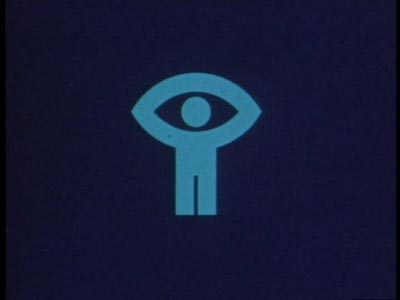
Our memories are strengthened during periods of rest while we are awake, researchers at New York University have found. The findings expand our understanding of how memories are boosted—previous studies had shown this process occurs during sleep, but not during times of awake rest.
“Taking a coffee break after class can actually help you retain that information you just learned,” explained Lila Davachi, an assistant professor in NYU’s Department of Psychology and Center for Neural Science, in whose laboratory the study was conducted. “Your brain wants you to tune out other tasks so you can tune in to what you just learned.”
{ EurekAlert | Continue reading }
science |
January 28th, 2010

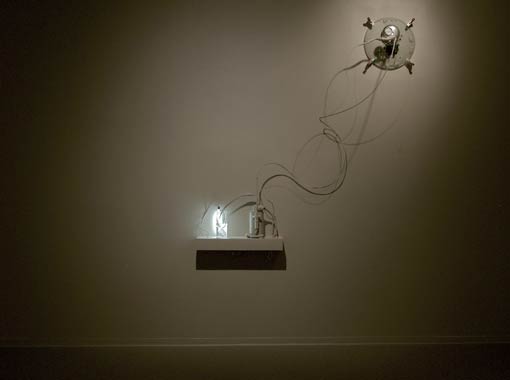
{ Michel de Broin, Silent Screaming, 2006 | Alarm, bell jar, vacuum pump and water, variable dimensions, single piece | This device is designed to silence an alarm system by creating a vacuum, which is an environment where sound cannot travel. The movement of the hammer striking the bell jar is visible but the alarm “scream” is inaudible. | more }
noise and signals, visual design |
January 28th, 2010
photogs |
January 28th, 2010

The heyday for nanotech VC [Venture Capital] likely saw its peak in 2008, when overall investment reached $1.4 billion. Last year, the sector raised only $792 million, signifying a 42% decline from 2008. But while overall nano VC backing is down, it’s not out, according to a new report from Lux Research. Investment in nano-driven healthcare and life sciences increased last year at the same rate that overall nanotech VC dropped — 42%. These two segments attracted $404 million last year, and are likely to lead VC investments in nano for the near future.
{ Lux Research/RD mag | Continue reading }
related { Paul Graham, essayist, programmer and partner in the y-combinator talks with EconTalk host Russ Roberts about start-ups, innovation, and creativity. }
economics, technology |
January 28th, 2010

{ Skimmer found Dec. 6, 2009, attached to the front of a Citibank ATM in Woodland Hills, Calif. A skimmer is a device made to be affixed to the mouth of an ATM and secretly swipe credit and debit card information when bank customers slip their cards into the machines to pull out money. | Krebs on Security | more }
economics, guide, scams and heists |
January 28th, 2010














